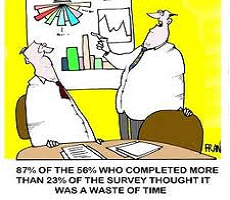March 13, 2015
Employers warned of new office malady: ‘Invisible Employee Syndrome’
 While some workers might be happy to stay under the workplace radar, this lack of engagement does not benefit their employers. Now firms are being warned of a previously unrecognised malaise, Invisible Employee Syndrome, which occurs when employees ‘go dark’, disappear off the performance and talent radar, and intentionally or unintentionally become invisible to their employer. The survey cites a range of contributory factors, including inadequate engagement, poor communications, a lack of insights and broken HR processes and systems. The joint survey from HRMS provider Fairsail and HR Grapevine showed that 78 percent of respondents felt employees were poorly engaged. Many UK organisations are suffering from this ailment, which the research suggests is reducing productivity, sapping innovation, undermining competitiveness and fueling attrition.
While some workers might be happy to stay under the workplace radar, this lack of engagement does not benefit their employers. Now firms are being warned of a previously unrecognised malaise, Invisible Employee Syndrome, which occurs when employees ‘go dark’, disappear off the performance and talent radar, and intentionally or unintentionally become invisible to their employer. The survey cites a range of contributory factors, including inadequate engagement, poor communications, a lack of insights and broken HR processes and systems. The joint survey from HRMS provider Fairsail and HR Grapevine showed that 78 percent of respondents felt employees were poorly engaged. Many UK organisations are suffering from this ailment, which the research suggests is reducing productivity, sapping innovation, undermining competitiveness and fueling attrition.























November 18, 2013
Interview: Dave Coplin of Microsoft on Big Data, engagement and culture
by Mark Eltringham • Comment, Technology, Workplace, Workplace design
More →